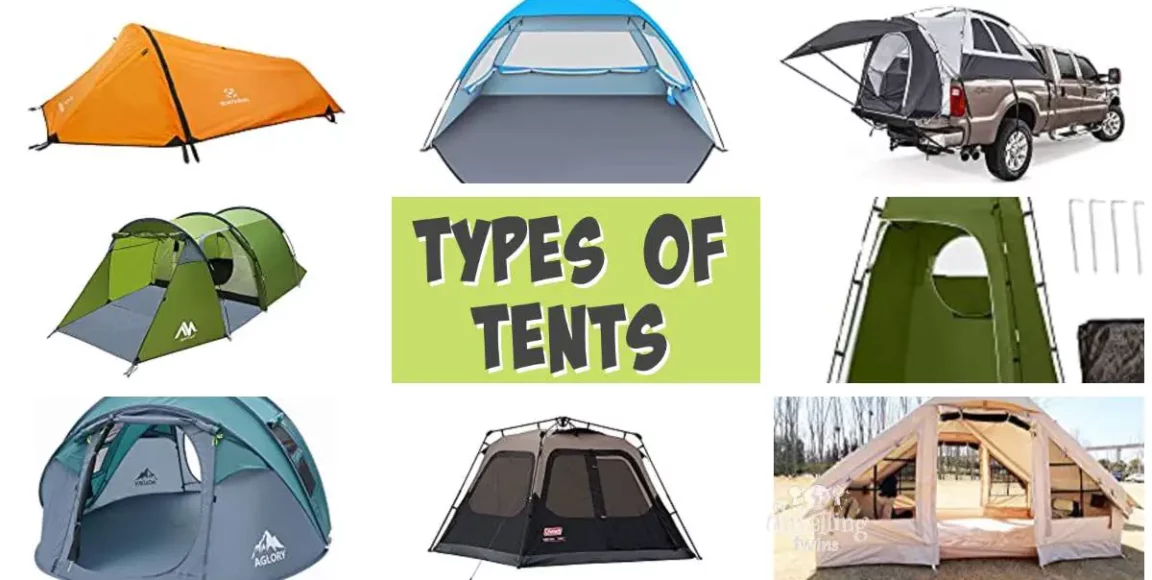Going camping is an experience that many people get at some point in childhood. Yet, camping’s popularity has surged in recent years. In 2021, for example, around 57 million American households went on a camping trip.
Of course, not everyone went camping as kids or went often enough to get a handle on the tent options out there. If you’re looking for the right tent for your next camping adventure, keep reading. We’ll cover the more popular types of tents.
Dome Tent
For those with at least a bit of camping experience, the venerable dome tent is one of the most popular choices. It boasts a relatively simple setup with two poles crisscrossing over the top of the tent. The poles provide the dome shape and offer a fair level of stability.
Dome tents offer double-wall and single-wall options with varying levels of waterproofing. Higher-end dome tents also come with a footprint, which is an extra protective layer that sits between the tent and the ground.
In most cases, dome tents perform best as summer tents, rather than as an all-weather tents.
A-Frame Tent
Before the advent of the dome tent, the A-frame tent was probably the most popular tent option. It’s a relatively simple design that offers fairly easy setup.
This style of tent typically has a pole at both ends, which gives the tent its overall A-shape. In some models, ropes and stakes keep the tent upright and in position. Other models use an additional pole to maintain tension and distance between the poles on either end.
These tents do have the problem of a minimal amount of room and storage space. In most cases, they’re best for one or two campers.
Geodesic Tent
Geodesic tents are something of a variation on the dome tent. Rather than using two poles, these tents use multiple poles to provide the shape and offer rigidity to the tent. Those extra poles and rigidity make these tents much more stable in bad weather, such as higher winds.
Of course, all of those extra poles also come with the downside of extra weight. That’s not a problem if you’re taking your car, truck, or SUV out to a campsite. It can prove problematic if you plan on hiking out into the backcountry.
Geodesic tents usually max out at four occupants and are one of the more expensive choices for going camping.
Cabin Tent
A cabin tent is more or less exactly what it sounds like, a tent that mimics the basic shape of a cabin. These tents are typically tall with a lot of “floor space.” Depending on the model you get, some even offer partitions that can help enhance privacy or offer a storage area.
As a general rule, these are tents for family camping. They aren’t designed for severe weather and often don’t fare well in windy conditions. Assuming relatively fair conditions, though, they are an excellent choice for a family camping trip.
Tunnel Tent
The tunnel tent is another variation of the dome tent. Rather than crisscrossing the poles over the tent to create the dome shape, the poles run over the tent in a row. Another pole typically runs the length of the tent to help it maintain it’s shape.
This arrangement creates the tunnel space in the name. In addition to the poles, these tents typically need additional lines to keep them stable and in place.
As a general rule, these tents do not lend themselves to single person setup. You’ll usually need someone else along for that part.
Pop-Up Tent
A fairly new addition to the tent family, pop-up tents are the “easy mode” of tent setup. The tents use a spring-loaded system to literally pop the tent up in place.
Like many “easy mode” options in life, these tents are not designed for serious camping in the wilderness or serious weather. They’re best for lightweight camping in relatively tame environments.
On the up side, they are simpler to set up. You also enjoy less weight to carry around with your camping gear.
If it’s your first time buying a tent, though, a pop-up tent may prove your best option. You can always upgrade to something a bit more robust if you discover a passion for camping.
Backpacking Tent
For serious outdoors types and those who spend extended periods of time camping by themselves, a backpacking tent can prove ideal. These tents are small and lightweight. They are also very durable, as a rule.
On the downside, you pay for that weight decrease in total space. The tents usually offer minimal headroom and floor space. They are also a pricier option, so you may not want to make a backpacking tent your first tent investment.
Other Gear
Tents get a lot of attention when it comes to camping and for good reason. After all, your tent is your shelter until you return to civilization. With that said, though, you should give a little thought to the other gear you’ll take along for the adventure.
For example, you should make sure that you get proper outdoor apparel. If the weather gets cold, you’ll need clothing you can layer for warmth or waterproofing.
You should also invest in basic first-aid gear. Ideally, you’ll also bring along a flashlight with long-lasting batteries and some method for starting a fire. While a fire might not seem necessary in summer weather, a fire can make drying out an easier task.
Picking Between Types of Tents
Picking between types of tents depends a lot on your experience with camping and your goals. For first-time campers taking a weekend camping trip in the summer, dome tents, A-frame tents, or pop-up tents will likely do the trick.
For families heading out for some light summer camping, a cabin tent is often ideal. For more serious campers and outdoor types or those expecting bad weather, geodesic or backpacking tents may prove a better choice
Looking for more camping tips? Check out the posts in our Life Style section.



